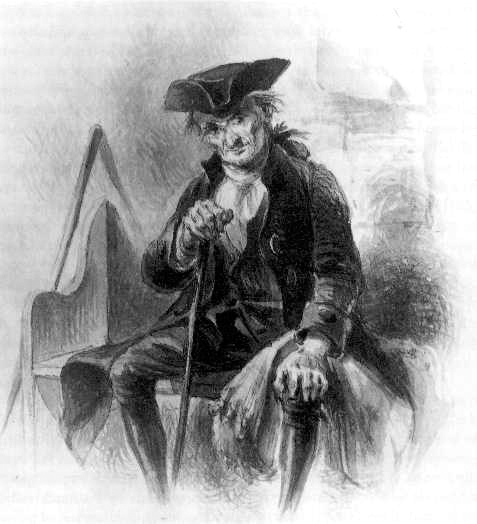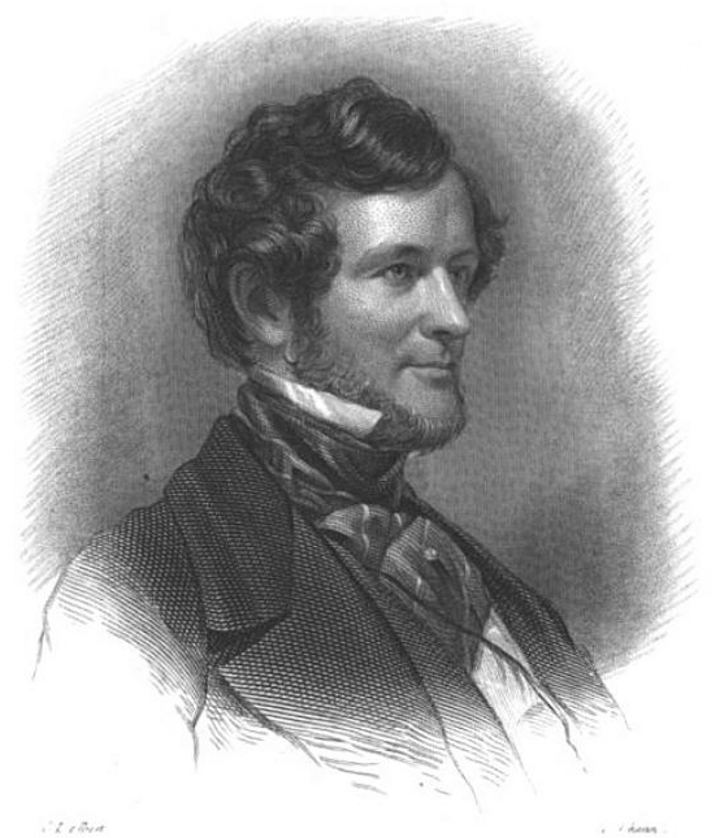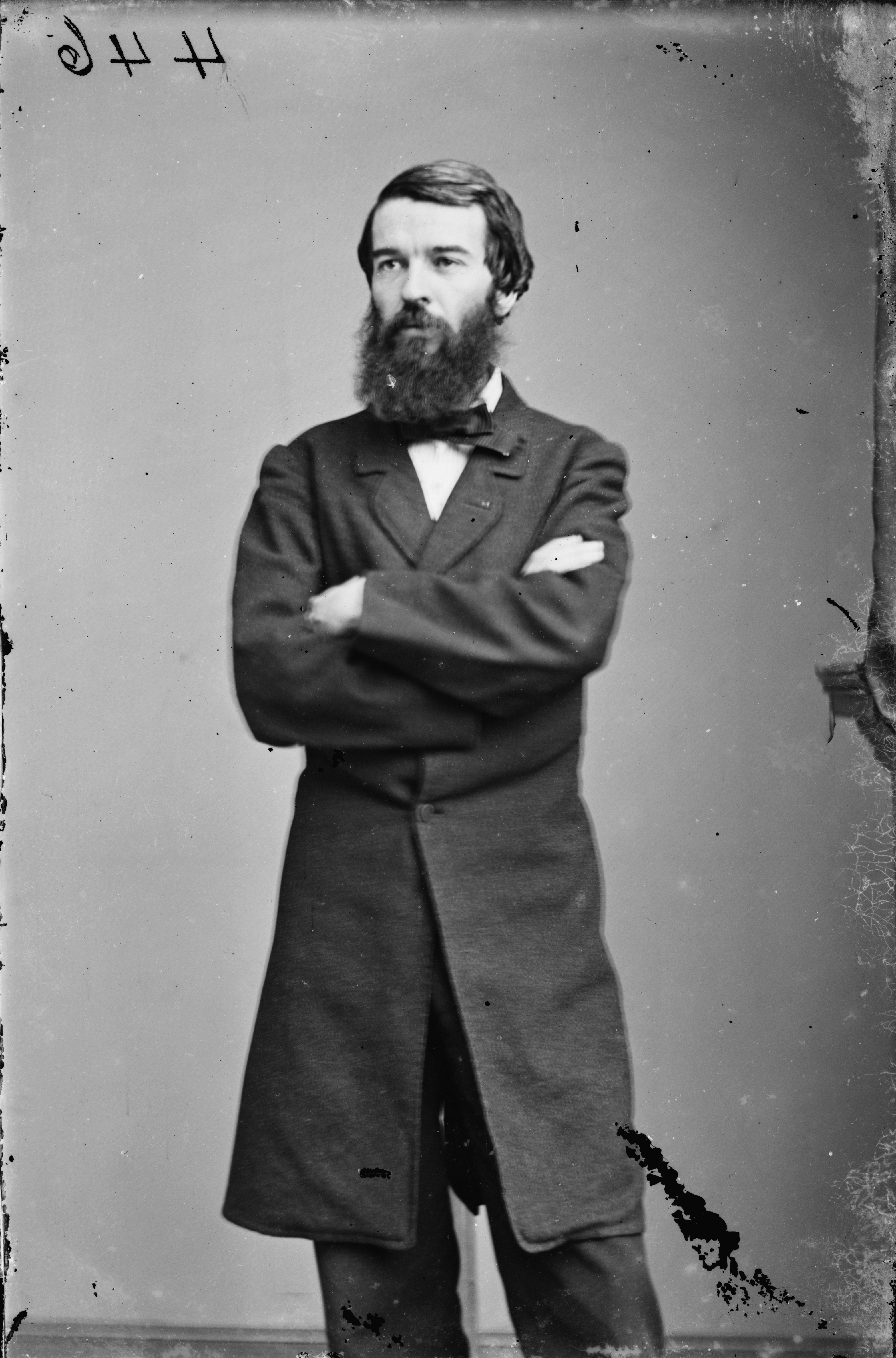|
The Knickerbocker
''The Knickerbocker'', or ''New-York Monthly Magazine'', was a literary magazine of New York City, founded by Charles Fenno Hoffman in 1833, and published until 1865. Its long-term editor and publisher was Lewis Gaylord Clark, whose "Editor's Table" column was a staple of the magazine. The circle of writers who contributed to the magazine and populated its cultural milieu are often known as the "Knickerbocker writers" or the "Knickerbocker Group". The group included such authors as William Cullen Bryant, Henry Wadsworth Longfellow, Oliver Wendell Holmes, James Russell Lowell and many others.Callow, James T. ''Kindred Spirits: Knickerbocker Writers and American Artists, 1807–1855''. Chapel Hill: The University of North Carolina Press, 1967: 104. ''The Knickerbocker'' was devoted to the fine arts in particular with occasional news, editorials and a few full-length biographical sketches.Callow 1967, p. 102. The magazine was one of the earliest literary vehicles for communication ... [...More Info...] [...Related Items...] OR: [Wikipedia] [Google] [Baidu] |
Lewis Gaylord Clark
Lewis Gaylord Clark (October 5, 1808 – November 3, 1873) was an American magazine editor and publisher. Biography Clark was born in Otisco, New York in 1808.Miller, Perry. ''The Raven and the Whale: The War of Words and Wits in the Era of Poe and Melville''. New York: Harvest Book, 1956: 12. He had a twin brother, poet Willis Gaylord Clark. Career He succeeded Charles Fenno Hoffman as editor and publisher of ''The Knickerbocker'' magazine, a role he held for over 25 years (1834–1861). By 1840, it had become the most influential literary publication of the time in the United States, especially through the contributions from such writers as Washington Irving, William Cullen Bryant, Nathaniel Parker Willis, and Henry Wadsworth Longfellow, and by Clark's own departments, the "Editors Table" and "Gossip with Readers and Correspondents". Pecuniary distress caused its discontinuance, and Clark removed to Piermont, New York, where he lived in a residence presented by former contribut ... [...More Info...] [...Related Items...] OR: [Wikipedia] [Google] [Baidu] |
Gulian Crommelin Verplanck
Gulian Crommelin Verplanck (August 6, 1786 – March 18, 1870) was an American attorney, politician, and writer. He was elected to the New York State Assembly and Senate, and later to the United States House of Representatives from New York, where he served as Chairman of the influential House Ways and Means Committee. He served in a number of appointed positions of major institutions in New York: governor of NewYork–Presbyterian Hospital, New York Hospital; regent of the University of the State of New York, where in 1858, he became its Vice Chancellor, serving until his death more than a decade later; and President of the Board of Commissioners of Immigration for more than two decades. Verplanck published articles and poetry in the ''North American Review,'' and was counted among the "The Knickerbocker, Knickerbocker group". As a young man, he was among the organizers of the American Academy of the Fine Arts in New York City, which opened in 1802. It was intended to promote t ... [...More Info...] [...Related Items...] OR: [Wikipedia] [Google] [Baidu] |
James Fenimore Cooper
James Fenimore Cooper (September 15, 1789 – September 14, 1851) was an American writer of the first half of the 19th century, whose historical romances depicting colonist and Indigenous characters from the 17th to the 19th centuries brought him fame and fortune. He lived much of his boyhood and the last fifteen years of life in Cooperstown, New York, which was founded by his father William Cooper (judge), William Cooper on property that he owned. Cooper became a member of the Episcopal Church (United States), Episcopal Church shortly before his death and contributed generously to it. He attended Yale University for three years, where he was a member of the Linonian Society.#Lounsbury, Lounsbury, 1883, pp. 7–8 After a stint on a commercial voyage, Cooper served in the U.S. Navy as a midshipman, where he learned the technology of managing sailing vessels which greatly influenced many of his novels and other writings. The novel that launched his career was ''The Spy (Cooper nov ... [...More Info...] [...Related Items...] OR: [Wikipedia] [Google] [Baidu] |
Horace Greeley
Horace Greeley (February 3, 1811 – November 29, 1872) was an American newspaper editor and publisher who was the founder and newspaper editor, editor of the ''New-York Tribune''. Long active in politics, he served briefly as a congressman from New York, and was the unsuccessful candidate of the new Liberal Republican Party (United States), Liberal Republican Party in the 1872 United States presidential election, 1872 presidential election against incumbent President Ulysses S. Grant, who won by a landslide. Greeley was born to a poor family in Amherst, New Hampshire. He was apprenticed to a printer in Vermont and went to New York City in 1831 to seek his fortune. He wrote for or edited several publications and involved himself in Whig Party (United States), Whig Party politics, taking a significant part in William Henry Harrison's successful 1840 presidential campaign. The following year, he founded the ''Tribune'', which became the highest-circulating newspaper in the c ... [...More Info...] [...Related Items...] OR: [Wikipedia] [Google] [Baidu] |
John Greenleaf Whittier
John Greenleaf Whittier (December 17, 1807 – September 7, 1892) was an American Quaker poet and advocate of the abolition of slavery in the United States. Frequently listed as one of the fireside poets, he was influenced by the Scottish poet Robert Burns. Whittier is remembered particularly for his anti-slavery writings, as well as his 1866 book ''Snow-Bound''. Biography Early life and work John Greenleaf Whittier was born to John and Abigail ( Hussey) Whittier at their rural homestead in Haverhill, Massachusetts, on December 17, 1807. His middle name is thought to mean ''feuillevert'', after his Huguenot forebears. He grew up on the farm in a household with his parents, a brother and two sisters, a maternal aunt and paternal uncle, and a constant flow of visitors and hired hands for the farm. As a boy, it was discovered that Whittier was color-blind when he was unable to see a difference between ripe and unripe strawberries. The farm was not very profitable, and there was ... [...More Info...] [...Related Items...] OR: [Wikipedia] [Google] [Baidu] |
Elizabeth Clementine Stedman
Elizabeth Clementine Dodge Stedman (1810–1889) was an American writer. She was the author of ''Felicita, a Metrical Romance'' (1855), ''Poems'' (1867), and ''Bianca Cappello, A Tragedy'' (1873). Biography She was born Elizabeth Clementine Dodge in New York City on December 10, 1810. Her father was David Low Dodge, who helped establish the New York Peace Society. Her mother was Sarah Cleveland, the daughter of minister Aaron Cleveland. Her brother was William E. Dodge, noted abolitionist, Native American rights activist, past president of the National Temperance Society, and founding member of YMCA of the USA. Elizabeth was a contributor to the ''Knickerbocker'' and to '' Blackwood's''. During a 14-year stay in Europe she was a friend of Robert Browning and Elizabeth Barrett Browning. She published ''Felicita, a Metrical Romance'' (1855), ''Poems'' (1867), and '' Bianco Capello, A Tragedy'' (1873), written during her time abroad in Italy. Personal life She married Edmund B ... [...More Info...] [...Related Items...] OR: [Wikipedia] [Google] [Baidu] |
Richard Henry Stoddard
Richard Henry Stoddard (July 2, 1825May 12, 1903) was an American critic and poet. Biography Richard Henry Stoddard was born on July 2, 1825, in Hingham, Massachusetts. His father, a sea-captain, was wrecked and lost on one of his voyages while Richard was a child, and the lad went in 1835 to New York City with his mother, who had married again. He attended the public schools of that city. He became a blacksmith and later an iron moulder, reading much poetry at the same time. His talents brought him into contact with young men interested in literature, notably with Bayard Taylor, who had just published his ''Views Afoot''. In 1849 he gave up his industrial trades and began to write for a living. He contributed to the ''Union Magazine'', the ''The Knickerbocker, Knickerbocker Magazine'', ''Putnam's Monthly Magazine'' and the ''New York Evening Post''.He married Elizabeth Drew Stoddard, Elizabeth Drew Barstow in 1852; she was also a novelist and poet. The next year, Nathaniel Hawthor ... [...More Info...] [...Related Items...] OR: [Wikipedia] [Google] [Baidu] |
George William Curtis
George William Curtis (February 24, 1824 – August 31, 1892) was an American writer and public speaker born in Providence, Rhode Island. An early Republican, he spoke in favor of African-American equality and civil rights both before and after the Civil War. Early life and education Curtis, the son of George and Mary Elizabeth (Burrill) Curtis, was born in Providence on February 24, 1824. His mother died when he was two. His maternal grandfather, James Burrill Jr., served in the United States Senate representing Rhode Island from 1817 to 1820. At six he was sent with his elder brother to school in Jamaica Plain, Massachusetts, where he remained for five years. Then, his father having again married happily, the boys were brought home to Providence, where they stayed till, in around 1839, their father moved to New York. Three years later, Curtis, fell in sympathy with the spirit of the Transcendental movement. He joined the communal experiment known as Brook Farm from 1842 to 1 ... [...More Info...] [...Related Items...] OR: [Wikipedia] [Google] [Baidu] |
Bayard Taylor
Bayard Taylor (January 11, 1825December 19, 1878) was an American poet, literary critic, translator, travel author, and diplomat. As a poet, he was very popular, with a crowd of more than 4,000 attending a poetry reading once, which was a record that stood for 85 years. His travelogues were popular in both the United States and Great Britain. He served in diplomatic posts in Russia and Prussia. Life and work Taylor was born on January 11, 1825, in Kennett Square in Chester County, Pennsylvania. He was the fourth son, the first to survive to maturity, of the Quaker couple, Joseph and Rebecca (née Way) Taylor. His father was a wealthy farmer. Bayard's youngest brother was Charles Frederick Taylor, a Union Army colonel killed in action at the Battle of Gettysburg in 1863. Bayard received his early instruction in an academy at West Chester, Pennsylvania, and later at nearby Unionville. At the age of seventeen, he was apprenticed to a printer in West Chester. This cites Smyth (18 ... [...More Info...] [...Related Items...] OR: [Wikipedia] [Google] [Baidu] |
Epes Sargent (poet)
Epes Sargent (September 27, 1813– December 30, 1880) was an American editor, poet and playwright. Early life Epes Sargent was the son of Epes Sargent (1784–1853) and Hannah Dane Coffin (1787–1819), and was born in Gloucester, Massachusetts, on September 27, 1813, where his father was a ship master. In 1818 the family moved to Roxbury, Massachusetts. From 1823 to 1829 he attended the Boston Latin School, but his education was put on hold while he traveled for six months to Saint Petersburg, Russia with his father. Upon his return he helped start the school's first literary journal, where he wrote about his travels to Russia. He then attended Harvard University where he contributed to the ''Harvard Collegian'', a college literary journal which was started by his older brother, John Osborn Sargent (1811–1891), who became a successful politician and journalist. Career By 1831 he was working as an editor for the ''Boston Daily Advertiser''. He then went to work editing the ... [...More Info...] [...Related Items...] OR: [Wikipedia] [Google] [Baidu] |
Nathaniel Parker Willis
Nathaniel Parker Willis (January 20, 1806 – January 20, 1867), also known as N. P. Willis,Baker, 3 was an American author, poet and editor who worked with several notable American writers including Edgar Allan Poe and Henry Wadsworth Longfellow. He became the highest-paid magazine writer of his day. His brother was the composer Richard Storrs Willis and his sister Sara wrote under the name Fanny Fern. Harriet Jacobs wrote her autobiography while being employed as his children's nurse. Born in Portland, Maine, Willis came from a family of publishers. His grandfather Nathaniel Willis owned newspapers in Massachusetts and Virginia, and his father Nathaniel Willis was the founder of ''Youth's Companion'', the first newspaper specifically for children. Willis developed an interest in literature while attending Yale College and began publishing poetry. After graduation, he worked as an overseas correspondent for the ''New York Mirror''. He eventually moved to New York and began to ... [...More Info...] [...Related Items...] OR: [Wikipedia] [Google] [Baidu] |
Lydia M
Lydia ( Lydian: 𐤮𐤱𐤠𐤭𐤣𐤠, ''Śfarda''; Aramaic: ''Lydia''; el, Λυδία, ''Lȳdíā''; tr, Lidya) was an Iron Age kingdom of western Asia Minor located generally east of ancient Ionia in the modern western Turkish provinces of Uşak, Manisa and inland Izmir. The ethnic group inhabiting this kingdom are known as the Lydians, and their language, known as Lydian, was a member of the Anatolian branch of the Indo-European language family. The capital of Lydia was Sardis.Rhodes, P.J. ''A History of the Classical Greek World 478–323 BC''. 2nd edition. Chichester: Wiley-Blackwell, 2010, p. 6. The Kingdom of Lydia existed from about 1200 BC to 546 BC. At its greatest extent, during the 7th century BC, it covered all of western Anatolia. In 546 BC, it became a province of the Achaemenid Persian Empire, known as the satrapy of Lydia or ''Sparda'' in Old Persian. In 133 BC, it became part of the Roman province of Asia. Lydian coins, made of silver, are among t ... [...More Info...] [...Related Items...] OR: [Wikipedia] [Google] [Baidu] |





.png)





